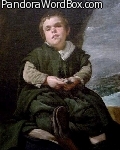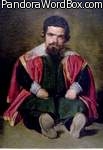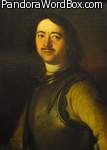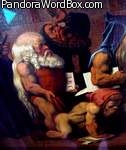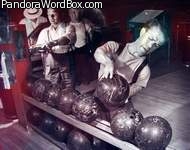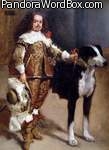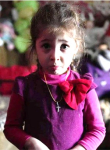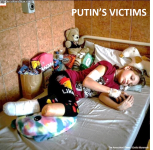ACHONDROPLASIA
Among the most frequent Disproportional Short Stature Syndromes
Posnatal mortality risks call of anticipatory care during early life.
Extract from a Classical Description by Josef Warkany
(Congenital Malformations, Year Book Publishers, 1971)
"... A limestone statuette of Chnoum-hotep from about 2700 BC shows a man with a large head, diminutive lower limbs, sort digits and upper limbs, lordosis and good muscular development. This individual had normal intelligence because he was "chief of the Perfumes" or "Head of the Wardrobe. Other achodroplastic dwarfs in Egypt were in charge of pets or jewelry ...
Achondroplasia or better chondrodystrophy, is known to occur in animals in many forms. It can affect the entire skeleton or only parts of it ...Tux-Zillertal cattle ... Peking-ese and French bulldog are examples of generalized chondrodystrophy, whereas in Niata cattle and Yorkshire swine the anomaly is limited to the head ... dachshunds have short extremities and normal spines and heads ...
... Porak described the first human hereditary instance (of achondroplasia) ... (a review) prior to 1912 (of 80 pedigrees showed that) 55 were solitary cases and 25 (pedigrees had) more than one case ... in 14 (pedigrees) there were two or more generations (of affected) ... Morch concluded that in the familial cases the disorder was transmitted as a dominant character or trait (phenotype)... the sporadic or spontaneous cases were due to sporadic new mutations; they were potential initiators of families in which about 50% of the offspring would have been affected ... the possibility of recessive inheritance was denied by Morch ... Concordance has been observed in identical twins and discordance in nonidentical twins ... (today it is known that the mutation is more frequent in children of older fathers - an example of male aging associated with an elevation of the FGFR3 gene).
The results of matings of two achondroplasts are of great interest ... the pregnancies ... are terminated prematurely ... (the fetus who inherits the achodroplasia gene from both parents ["double hit"] manifests a more severe and lethal skeletal dysplasia named "achondrogenesis", the matter is further complicated since the same mutated gene can cause diverse phenomena or phenotypes - in short, "achondroplasia type of chondrodystrophy" is for the time being, the most precise label for this sort of disorder)
Advanced parental age (paternal in particular) has been known to be an etiologic factor in achondroplasia since 1912 ... Penrose found and Murdoch confirmed that paternal age is the major factor in the origin of new mutations of achodroplasia. If the mother is dwarfed, the birth weights are lower ...In the newborn, the head is of normal size but there are frontal and parietal eminences and the root of the nose is depressed. The bones of the skull are of normal hardness and the fontanelles and sutures of normal width. The trunk is of almost normal size but the ribs are flaring and a rosary can be felt at the costochondral junction. The limbs are short, thick and curved. In some patients the skin appears too large for the size of the bones ... "like an accordion".
In addition ... lumbar lordosis (is common) ... scoliosis is rare ... the height of the vertebral bodies appears reduced and the intervertebral spaces enlarged ... lumbar bodies taper in width and with this goes a narrowing of the lumbar spinal canal ... may lead to neurologic complications ... spinal cord and cauda equina ... can be compressed easily ...
Pelvic changes are of great biologic importance, ... inability of female achodroplastics to deliver without expert help ...
With the arms hanging at the sides, the fingertips usually do not reach below the major trochanter of the femur. The shortening is more marked in the proximal than in the distal tubular bones (rhizomelia). The wrists and ankles often are prominent owing to terminal spread of the bones.
The hands and feet are short and broad. Sometimes there is a divergence of the third and fourth fingers whereby a "trident" hand is formed. Coxa vara frequently is present and the feet are turned inward, which explains the waddling gait so characteristic of achondroplasia. Although achondroplastic dwarfs usually can be recognized at a glance, they do not represent as uniform a disease picture as is generally assumed.
The mental and artistic faculties ... should be developed. Today, there exist many more specialties in which the brain rather than the length of the extremities counts.
(This is one of the three overviews. The companion overviews are concerned with the terms Dwarf and Midget.)
| An email we received stated "we presume you know the term midget is offensive to little people" Our answer was, "Pandora Word Box is dedicated to the ideas and roots of words with an emphasis on medicine (expanded etymology by mythology, history, poetry and other humanistic spheres). Our intention is not to be offensive but the word "midget" populates many dictionaries and daily parlance. We recognize that some words are vulgar to some and offensive to others, but we can not avoid having to recognize the realities of prevalent use. |



